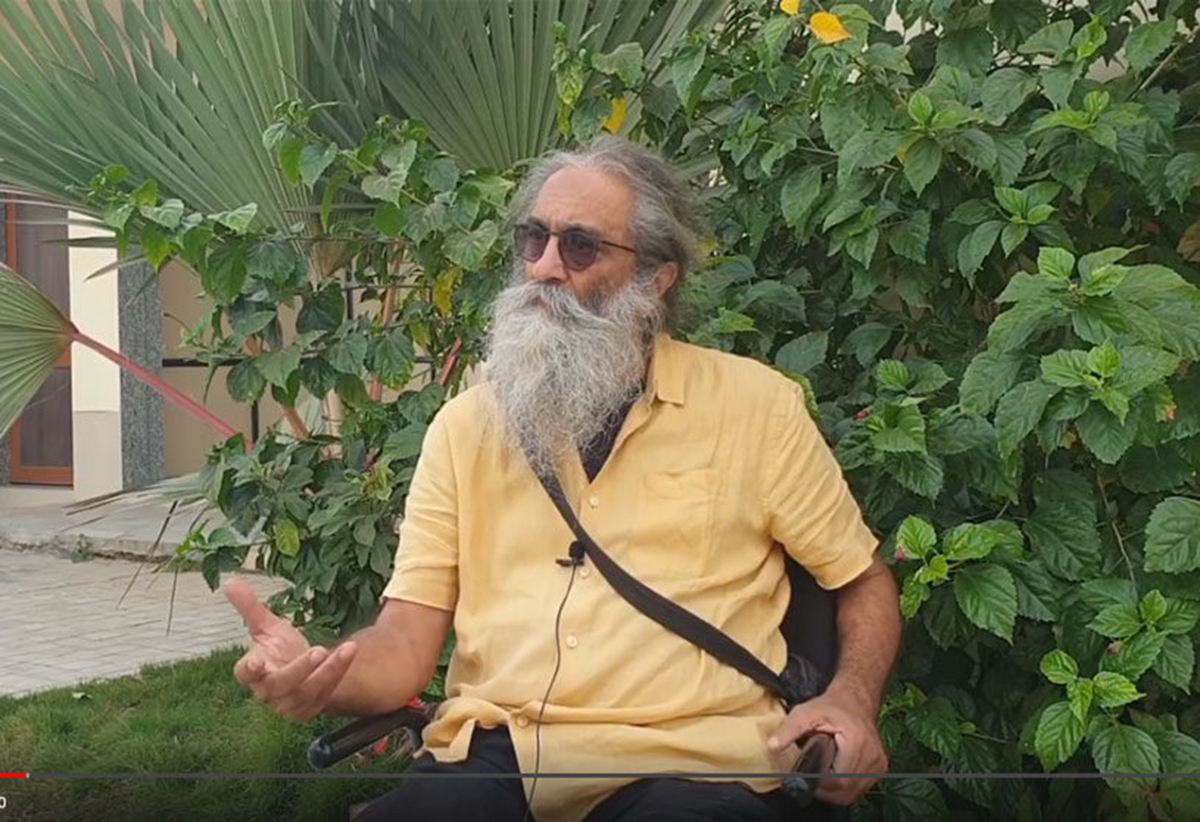In this second part of the interview Prof Gurdev Singh talks about the process of abstraction and diagramming. He explains this way of lateral thinking by comparing the design journey as a connection between two points “A” and “B”. Instead of taking a linear path between these tow points, the journey is perceived from the third abstract point “C” which is outside the line of thought.
“….[a] more of a modernist line of thinking [is] where you recognize all the problems and you solve the problems and you go from ‘A’ to ‘B’. But this one [Diagramming] is to take a sideways step, to take an abstract step sideways, take a point ‘C’ and reach there and then reinterpret through abstraction the reality and reach point ‘B’.”
An important part of the process of abstraction is the process of Diagramming. In this method, every issue related to the architecture/design is solved abstractly and put together to form a building. Prof. Gurdev contrasts it to the modernist way of designing where the initial sketch is representative of a whole lot of character of the building like materials, spanning or environmental issues. Whereas in this method of diagramming all issues are separated into layers and jumbled up, and the designer randomly chooses an issue to express it diagrammatically in a random order without dwelling upon any other issue such as material, grid, order or spans.
“This way one is able to capture philosophical component of the building. Because when you only do the functional component, you miss the spirit of the building”
Further In the interview, Prof Gurdev explains the importance of ‘Problem Based Learning’ in Architecture. Architectural Design Studios have always been taught in a way where students are supposed to fid solution to a Design Problem. He emphasizes that not just studios, but also subjects like structure and construction should also be taught in similar way. These courses should encourage students to solve a problem in the best way by making, building and breaking.
“…We teach structure by making and breaking, and then why it is breaking and how can I improve it. And in construction you put two pieces of timber together … you are given a problem and you solve it in the best way.”
According to him, the best trait a teacher must have is to not overpower their personality over the student. Upon asking about his teaching philosophy he said:
“We have to inspire them [students] to go further. If you feel you have to feed somebody then you have to kill you ego and feed it in such a way that the student feels it is their idea…The ownership of the idea must remain with the student.”
He also believes that the current construction system of our country is not based on lack of technology, but is dependent on the availability of cheap labour, specialized in a particular skill set. According to him, it is beyond architect’s scope to change the face of the construction industry until the social system of labour exploitation changes, forcing the developer to employ more efficient ways of construction and design. Nevertheless he advocates the teaching of advanced technologies in architectural pedagogy as it would become inevitable in the coming future.
“The day that one person starts charging Rs 3000-5000 per day, the builder will have to get up and change their construction system. It is not in the control of the Architects….When you [builder] have to pay like that as a designer [also Architect] you have to think that how I can streamline the construction so that in one day of carpenters work I can get the maximum output… ”
